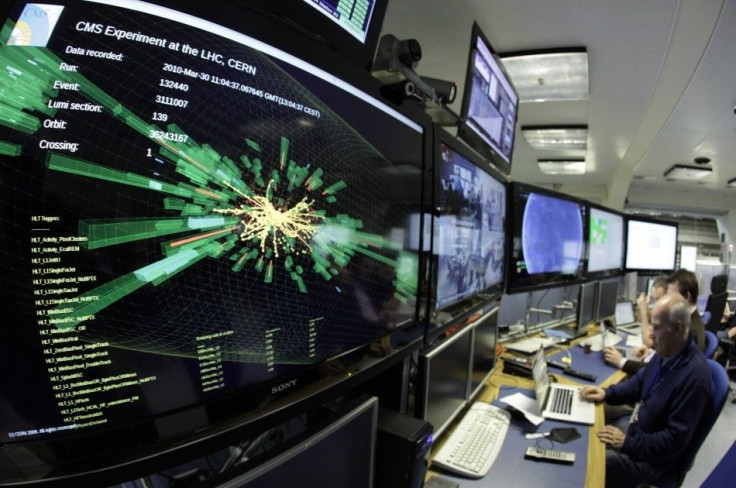Physicists May Rule Out 'God Particle' Higgs Boson By Month-End

By the end of September, the long-debated existence of the Higgs boson, or God particle, may be made clear according to U.S. physicists.
The physicists Fermilab research center that operates the Tevatron collider, hope to have information to rule out the existence of a Higgs boson with a mass within the most likely range, according to Fermilab communications director Katie Yurkewicz in her email to Reuters.
Tevatron, and its competitor CERN's Large Hadron Collider (LHC), have long attempted to identify the God particle which could solve the greatest mystery in physics.
Tevatron, denied necessary funds, will close down on Sept. 30.
If the Higgs boson exists, the collider would not be able to confirm its existence before that date, due to the lack of data. Multiple sightings of the Higgs are needed before confirming its discovery, said scientists.
If the Higgs is found by Tevatron before its shutdown, the LHC will carry on the mission to discover the elusive particle. CERN expects the LHC's data to find a preliminary conclusion of the Higgs' existence by the end of 2011, and the scientific proof to be generated next year.
The Higgs boson, the sub-atomic particle fundamental to the understanding the nature of matter, was first hypothesized in 1964 by Edinburgh University physicist Peter Higgs.
As the lynchpin of the modern particle physics theory called the standard model, Higgs Boson is supposed to be giving mass to other particles.
If discovered, Higgs boson will help scientists answer long-held questions like what is the source of mass and why some particles have mass and others don't. It will also help them throw light on the supersymmetric particles and thereby throw light on the investigation into the make-up of dark matter.
A lot of mysteries shrouding the beginning of the universe are locked in the Higgs boson. If it is not found, scientists will have to change the standard model postulation through which they explained how sub-atomic particles interacted with each other. If the Higgs boson is ruled out, another explanation for how particles get their mass will be needed.
Back in July, the European Organization for Nuclear Research (CERN)'s Large Hadron Collider (LHC) has once detected some signs of the particle, puffing up hope for the discovery of the God particle. However, a statement released in August said the LHC's ATLAS and CMS experiments excluded with 95 percent certainty the existence of a Higgs over most of the mass region from 145 to 466 gigaelectronvolts (GeV).
That covers the bulk of the mass range that is easiest for physicists to explore.
The Higgs boson has been rather elusive so far and no-one really knows what it will look like, wrote CERN scientist Paulime Gagnon in her blog on Monday.
Physicists have then shifted their focus on searching for the boson at lower and higher energy ranges; below 145 GeV or above 466 Gev. Several ranges in the middle, around 250 GeV, have not been fully excluded yet.
We're just hanging on, trying to get every last collision we can before we turn off to see whether we can make a statement, an important statement, about it, said Fermilab physicist Rob Roser.
We want to go out sprinting across the finish line, not crawling.
© Copyright IBTimes 2024. All rights reserved.











